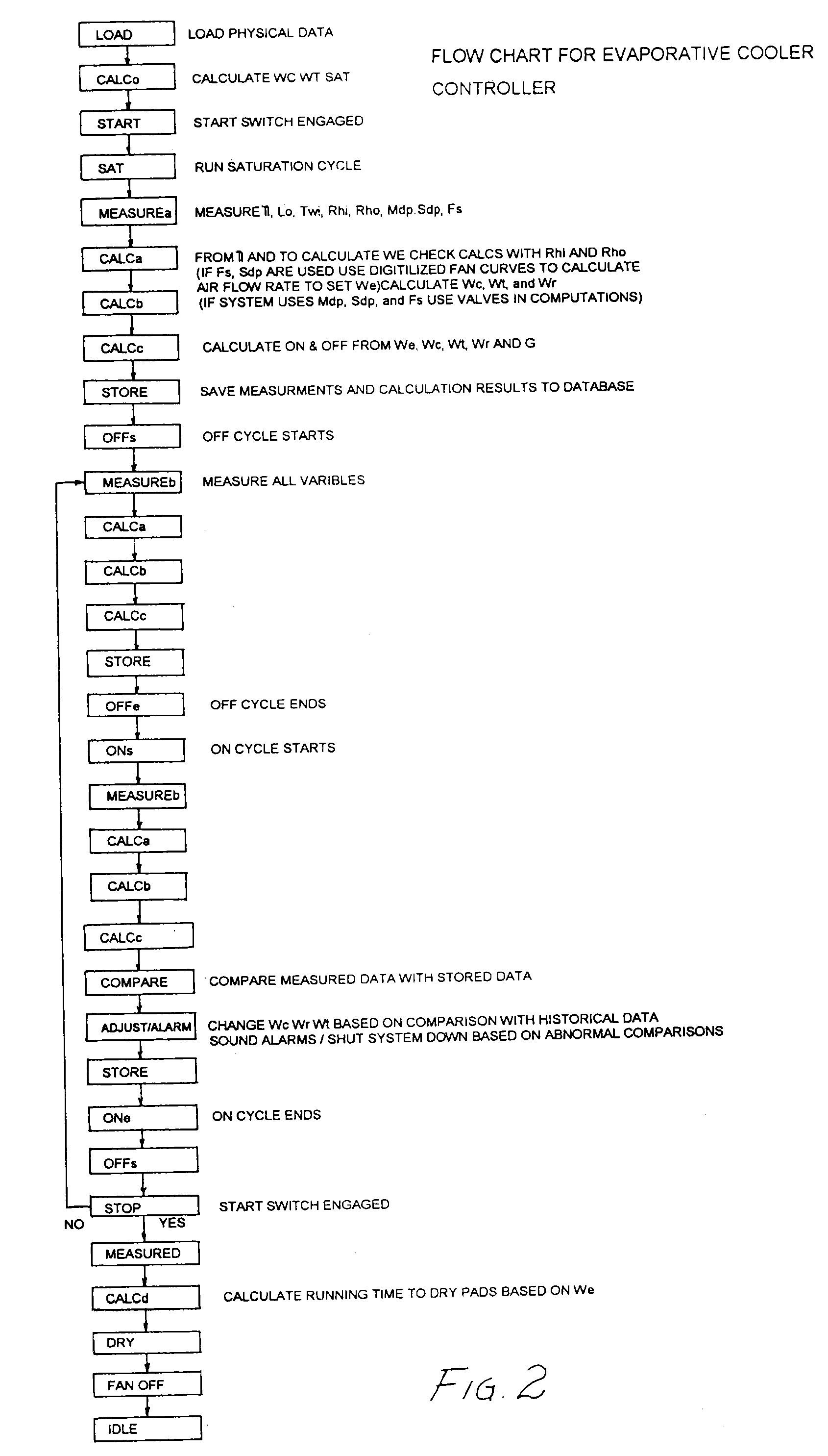Non Uniform Water Distribution System for an Evaporative Cooler
a water distribution system and cooler technology, applied in the direction of machines/engines, combustion air/fuel air treatment, combustion gas purification/modification, etc., can solve the problems of lowering the temperature of the air, wear and tear of inexpensive pumps, and relatively rapid changes of pump delivery heads, etc., to achieve high cooling efficiency and high cycles of concentration
- Summary
- Abstract
- Description
- Claims
- Application Information
AI Technical Summary
Benefits of technology
Problems solved by technology
Method used
Image
Examples
Embodiment Construction
[0049] The psychrometric chart provides information such that knowing the inlet dry bulb temperature, the inlet wet bulb temperature, altitude, and volumetric flow rate of the air one can determine the amount of moisture that can be added to this air and the resulting leaving air dry bulb and wet bulb temperatures. The chart in effect uses thermal and mass balance equations and algorithms to yield this information. For an evaporative cooler, the mass balance and associated psychrometric equations are solved using the inlet conditions and the capabilities of the equipment. The evaporation rate is dependent on the difference between the local conditions which vary along the depth of the media and the wet bulb temperature. Existing once through evaporative coolers attempt to measure and control water application using the inlet temperature, the pad or media temperature, the outlet temperature and relative humidity or pad / media relative humidity, but fail to do so with algorithms correl...
PUM
| Property | Measurement | Unit |
|---|---|---|
| Diameter | aaaaa | aaaaa |
| Diameter | aaaaa | aaaaa |
| Diameter | aaaaa | aaaaa |
Abstract
Description
Claims
Application Information
 Login to View More
Login to View More - R&D
- Intellectual Property
- Life Sciences
- Materials
- Tech Scout
- Unparalleled Data Quality
- Higher Quality Content
- 60% Fewer Hallucinations
Browse by: Latest US Patents, China's latest patents, Technical Efficacy Thesaurus, Application Domain, Technology Topic, Popular Technical Reports.
© 2025 PatSnap. All rights reserved.Legal|Privacy policy|Modern Slavery Act Transparency Statement|Sitemap|About US| Contact US: help@patsnap.com



